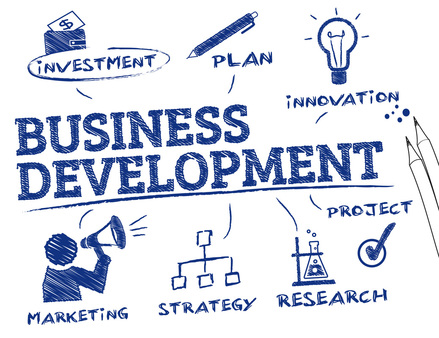
In the ultra-competitive world of business, continuous improvement is the name of the game.
There’s really no exception to the rule:
If you’re not always looking for ways to improve upon your current processes, you’re eventually going to fall behind.
But there’s more to it than simply “keeping an eye out” for ways to do more or do better.
What you need is a more strategic, systematic, and iterative process to ensure your team stays on the up and up at all times.
Enter operational improvement.
What is Operational Improvement?
Operational improvement (OI) refers to the systematic process businesses adopt to optimize their operations, enhance efficiency, and achieve better results. This process often integrates methodologies such as Lean and Six Sigma, which focus on waste reduction and process enhancement.
In essence, OI is about identifying and rectifying inefficiencies while continuously enhancing effective practices. The ultimate goal is to elevate the overall performance of the business.
While its benefits are numerous, some of the most prominent include reduced costs, improved customer satisfaction, enhanced employee morale, and greater competitiveness in the market.
The beauty of OI is its versatility. It can be applied across any area of business operations and can manifest in countless ways.
For instance:
- A retailer might streamline their supply chain to reduce costs and improve speed.
- A hotel chain might introduce mobile check-ins to eliminate bottlenecks at the front desk.
- A medical practice might adopt strategic knowledge management to foster better communication and collaboration among teams.
The cyclical nature of operational improvement ensures that businesses are always on the lookout for ways to refine and evolve. It's not a one-off effort but a continuous commitment to excellence in operations.
Operational Improvement, BPI, and More
Operational improvement is closely related to business process improvement and process improvement plans — but they’re not completely synonymous.
Essentially:
- Operational improvement is the overarching process of improving major area(s) of operation to focus on in order to have the biggest impact on your business operations as a whole.
- Business process improvement focuses on the specific workflows to improve within a given department in order to enhance said department’s productivity.
- A process improvement plan is the documented plan that your team will follow as you improve the above process.
Why is Strategic Operational Improvement So Important?
Though you probably don’t need us to tell you that OI is crucial to the continued success of your business, it’s important to dig into the more specific reasons as to why this is.
Operational Improvement Maximizes Productivity
One of the main goals of operational improvement is to maximize the productivity of a given team within your company and, in turn, your business as a whole.
The goal is to allow your team to operate more effectively and efficiently. In other words, operational improvement ensures your team can do more than they could before — while spending as little as possible to do so.
It Minimizes Error
Whether it’s the main goal of a specific initiative or simply a byproduct of becoming more productive, OI typically results in fewer errors being made by your team over time.
The immediate effects of this include less downtime and rework, fewer customer complaints, and the potential avoidance of legal issues. Thinking long-term, this means less chance of sustaining major damage to team productivity and your business’ reputation.
It Reduces Operational Costs
If your team is achieving more, while using resources as efficiently as possible, and avoiding as many mistakes as possible, you’ll end up saving a ton on operational costs over time.
Since you’ll be spending less to make your business run, you’ll then have more cash left over to make even more — and more substantial — improvements to your operations in the future.
It Builds on Team Knowledge
Operational improvement both relies on your team’s collective knowledge and ensures this collective knowledge continues to grow in quality and quantity.
It aims to take stock of what your team already knows and does well — and use this information to make fundamental improvements to your operations.
(This, in contrast to blindly following trends, randomly attempting various solutions, or otherwise taking a non-strategic approach to improving your business ops.)
From there, your team will be driven to continue building on this knowledge and using it creatively to find even more ways to improve your operations.
It Sustains and Future-Proofs Your Business
Operational improvement is critical at all stages of business growth.
- Brand new startups need to be strategic from the get-go when creating and implementing new processes.
- Growing small businesses must ensure things are running as smoothly as possible, while also looking to make incremental but impactful improvements to their processes.
- Established enterprises need to always stay one step ahead of their competitors — and continuously improve their performance with every passing day.
Five Crucial Steps to Operational Improvement
Systematic operational improvement in any area of business is a cyclical process that involves five essential steps.
(image)
Let’s take a closer look at what each entails.
1. Assessment of Current Operations
The operational improvement cycle starts with an overall assessment of how things are currently going for your business.
Here, you’ll be looking to determine:
- Which areas of your business are in need of improvement
- Which of these areas are most in need of improvement
- Which of these issues has the most impact on your company’s overall productivity
Answering these questions requires a deep dive into your performance data, along with a holistic, contextual analysis of this information as it’s discovered. This will allow you to eventually hone in on specific improvements to be made — while always keeping the “big picture” in the front of your mind.
2. Setting Clear Objectives
Once you know where you’ll be focusing, you need to set clear goals for your upcoming OI initiative.
Ensure these goals are SMART: Specific, Measurable, Achievable, Relevant, and Time-bound. If, for instance, you've identified gaps in employee knowledge or frequent queries on certain topics, your objective could be: "Increase knowledge base software utilization by 30% over the next quarter to reduce repetitive inquiries and improve resolution time."
3. Engage Stakeholders
Next, you’ll begin reaching out to the members of your team who are directly responsible for performing the operations in focus.
Your goals at this stage will include:
Communicating the operational process to be improved — and why this improvement is so important
Facilitating brainstorming and discussion to determine the best way to improve — and how to implement this change
Identifying what resources the team will need in order to make this change — and ensuring they have continued access to these tools as needed
As we’ll discuss, this step is crucial for getting your team members onboard with the upcoming change, and for ensuring the change leads to the best possible outcome for the business.
4. Implementing Process Improvement Methodologies
With your various stakeholders, you can now begin actually planning and implementing the operational change to be made.
(As mentioned earlier, this is where process improvement plans come into the picture.)
Here, you’ll be looking to:
- Determine the most effective methodology (e.g., Lean, Six Sigma, PDSA) to implement
- Set performance-specific goals that align with the bottom-line goals you’d set earlier
- Create a clear action plan for your team to follow as they implement the change
Once this is all in place, you’ll be ready to begin putting your plan into action. While you’ll be handing control over to your team for the most part, you’ll still need to stay consistently on-hand to guide them and provide whatever resources they need to make the initiative a success.
5. Continuous Monitoring & Feedback
As you roll out the operational improvement, you’ll want to know that everything is going as planned — and is actually having the positive impact on productivity you’ve been aiming for.
This means keeping close tabs on:
- Your team’s ability to meet the change-related goals you’d set for the initiative
- Your team’s performance data as the change is implemented and systematized
- Any changes in overall productivity and profitability that can be attributed to the change
You also want to continually collect feedback from those directly involved in the change — and from team members who have been indirectly impacted by the change. This will allow you to keep the holistic perspective that is so foundational to strategic operational improvement.
Key Challenges of Operational Improvement
To be sure, implementing operational improvements — and doing so effectively — comes with its fair share of challenges.
Such as…
Resistance to Change
No matter how progressive and flexible your team may be, they’ll always be susceptible to at least some degree of resistance to change.
(Case in point, Gartner recently found that over half of change initiatives fail — and only 34% are definitively successful.)
While strategic change management techniques can certainly help, here, it’s also important to consider this resistance when setting goals and planning for the future.
Overhead Costs
Making any kind of change to your current operations will cost your business in money, time, and loss of productivity — at least upfront.
This, perhaps above all else, is the reason you don’t want to take a “spaghetti-against-the-wall” approach to operational improvement. You absolutely need to be sure the changes you make will eventually lead to higher levels of productivity and profit.
Still, you’ll risk missing out on lucrative opportunities while certain processes aren’t operating at 100%. While not exactly quantifiable, you’ll want to consider this part of the equation when prioritizing your next operational improvement to be made.
Issues With Complexity and Proficiency
The above-mentioned resistance to change is often due to the perceived complexity of the intended change — along with a potential lack of proficiency with the “new way of doing things”.
(For example, introducing new software, tools, and technology will almost always come with a certain learning curve. Even digital natives will need time to acclimate with a new UI and operational system.)
Thankfully, this is easily mitigated by providing your team with proper training, along with the time and resources needed to skill-up as necessary.
Maintaining Momentum
Ideally, your more intentional approach to operational improvement will help keep the cycle moving as a matter of course.
Unfortunately, there’s always the chance you’ll encounter roadblocks, setbacks, and other points of friction as you put an OI initiative in motion. And, even if things are going as planned, your employees can potentially become restless if it takes too long for their efforts to pay off.
In any case, these events can hold your team back from achieving the true potential of your OI initiative — and can even derail your efforts completely.
Key Best Practices for Effective Operational Improvement
Finally, let’s dive deep into the key things you can do to all but guarantee the best possible outcome for your operational improvement efforts moving forward.
1. Leadership Commitment to Excellence
As we discussed earlier, operational improvements are always initiated from the top — for a few key reasons.
For one, your execs have the most visibility into all areas of your operations. From this high vantage point, they’re in prime position to assess…
- Each area in isolation and in the context of the rest of the company
- Which areas are most impacted by a lack of productivity
- Which operational improvements will have the most impact on the business
Your decision-makers are also the ones who will be providing the resources necessary to make the change happen.
All this being said, your exec team must be committed to actually becoming involved in the OI processes they spearhead. This means working with your various stakeholders — not simply announcing a change from on-high with minimal interaction to follow.
2. Employee Commitment and Involvement
Likewise, your employees must be committed to making any operational changes that will allow them to be more productive and to provide more value to the company.
As we touched on earlier, the key to this is making sure they see how the upcoming change will benefit them. Focusing on things like time saved, redundant tasks avoided, and other ways their job will become more streamlined is a pretty straightforward way to get them onboard here.
From there, make sure they stay involved in the improvement initiatives as you plan and implement the change. Otherwise, you run the risk of them simply going through the motions — and potentially falling back into the “old way” at the first sign of difficulty.
3. Clear Communication
Tying the above two points together, clear and comprehensive communication throughout your OI initiatives is a must.
Firstly, be overly communicative when explaining the ins and outs of the initiative. In addition to using clear language when making announcements, you can offer supplemental documentation that explains and illustrates these changes for them to access as needed.
Creating and maintaining open lines for real-time communication allows all stakeholders to stay in close contact, and to stay up-to-date on progress made over time. This is critical for ensuring your teams stay desiloed throughout the initiative — which will in turn help you avoid redundancies and other bottlenecks in time.
4. Data-driven Approach
Making fundamental changes to your operations is always a high-stakes venture.
That said, it’s vital that every decision you make throughout your OI initiatives is based on current, comprehensive, and contextual data.
Becoming truly driven by data first requires tying your big-picture goals to those you’ll eventually create within your individual process improvement plans. You’ll then need to implement systematic (and, ideally, automated) processes for data collection, organization, analysis, and synthesis.
This takes the guesswork out of your OI efforts — and helps eliminate any preconceived biases that could skew your decision-making processes.
5. Celebrate Successes
A huge part of making operational improvements stick lies in reinforcing:
The positive impact the change is having on employees, teams, and the business, and
How much you appreciate the extra effort your team has put into the initiative
Regularly sharing and celebrating everything from quick wins to milestones also gives you and your team the opportunity to reconvene, stay aligned with one another, and discuss any dynamic improvements they could make to their original plan as they proceed.
6. Making Iterative Progress
Strategic operational improvement is all about making iterative progress within all areas of your business.
But it’s important to regularly step back and assess your overall approach to OI, too.
Over time, take a closer look at the universal aspects of operational improvement, such as:
Your data and knowledge management processes
Your team’s ability to communicate and collaborate effectively
The tools and technology used at each stage of OI
In identifying and enhancing the factors that transcend domains, you’ll maintain a strategic and effective approach to operational improvement both now and in the future.
Using Helpjuice to Optimize Operational Improvement
Effective knowledge management is needed at all stages of operational improvement:
- To easily access and assess current process documentation
- To identify and communicate clear goals for the initiative
- To keep track of performance data and other vital info over time
At the center of these knowledge management efforts lies a solid knowledge base software in Helpjuice. Teams of all sizes have used our software to successfully implement foundational changes to their approach to customer service, employee training, team communication — and much more.
Want to learn more about how we can help optimize your operational improvement efforts?
Get a free 14-day trial of Helpjuice today!





